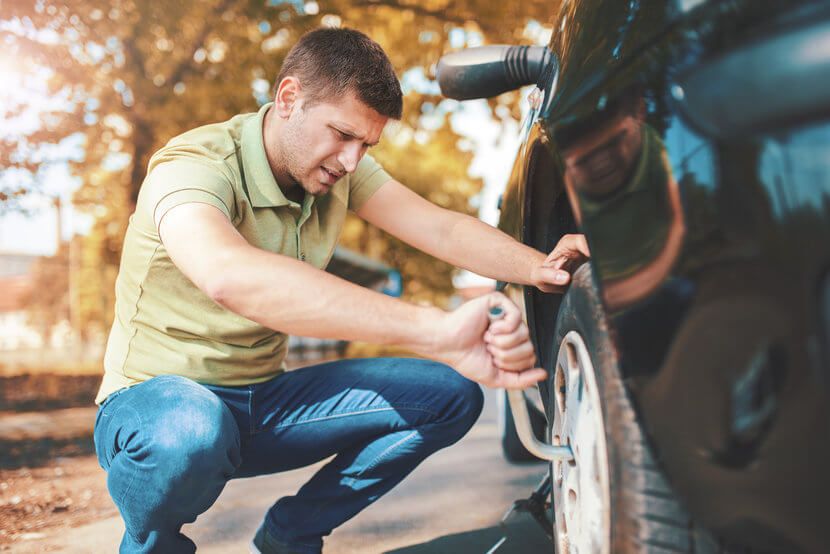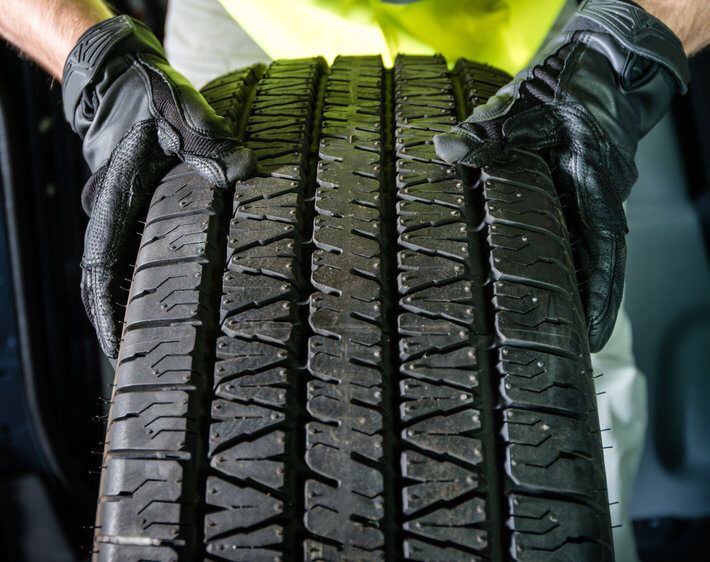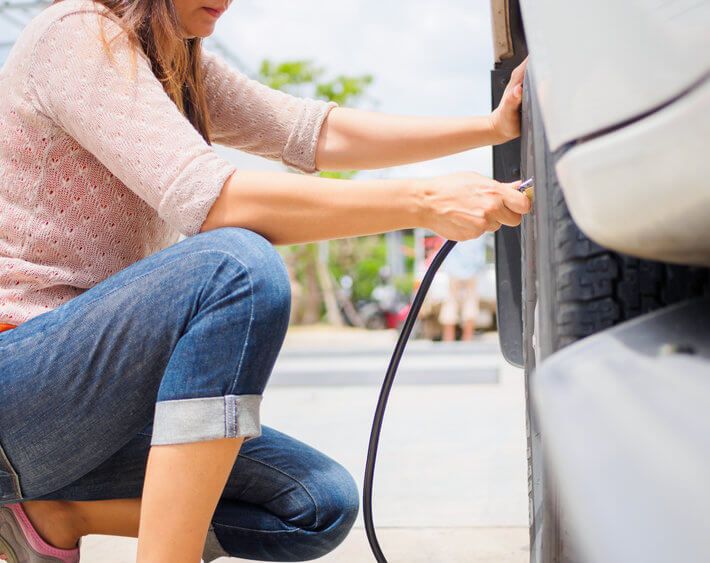Your tires have a tough gig. From maneuvering around potholes to navigating through bumpy construction zones, your tires take it all on just to get you from point A to point B. Sometimes they make it out unharmed—other times, not so much.
Why do tires come out safe and sound sometimes, but not others? It’s time you went further, longer. Learn the most common reasons your tires go flat and how you can better avoid them!
Why Do Tires Go Flat?
Bad Road Conditions
The worse the condition of the road, the greater your risk of getting a flat tire. Uneven paving, potholes, and debris are enemies to your tires–sometimes causing an immediate problem and other times causing a slow leak.
Avoid it: Safe driving is one of the best ways to avoid aggravating road dangers and tire damage. Drive slower and leave extra space between you and the vehicle in front of you to give yourself more time to spot (and avoid) bumps, potholes, and road debris.
Heat
Not-so-fun fact: your tire is most likely to go flat during the hottest months of the year. High temperatures cause the air in your tires to expand, which in turn increases the tire’s internal pressure. When the pressure rises, so does your chance for a leak or total blowout. Most Tire Pressure Monitoring Systems (TPMS) measure your tires when they become underinflated–not overinflated–so don't wait for your dashboard light to pop on like it tends to do on cold winter mornings.
Avoid it: Check your tire pressure in the morning, before you've driven more than a few miles and the sun starts to heat things up. This is your best chance at an accurate tire pressure reading. Double check that your tire pressure is correct and avoid over-inflation at all costs, especially during the summer! To keep learning, check out What to Know About Summer Driving and Tire Pressure.
Valve Stem Leak
Flat tires aren’t always caused by a hole in the rubber. Instead, a malfunction or leak in the valve stem can be the culprit. The valve stem is the part of the tire that you unscrew when adding air. Any damage or even dirt on this small piece could cause your tire to lose air until it’s completely flat.
Avoid it: Valve stems age with time and can become brittle or cracked. Take your car to your local tire shop to have the stem inspected and if needed, fixed or replaced.
Normal Wear & Tear
Sometimes there isn’t a major incident that causes a flat tire. Normal wear and tear can simply get the best of your tire! As you drive, the tread on your tires gradually wears down. This can make your tires more vulnerable to the typical hazards of daily driving–in other words, more likely to go flat!
Avoid it: While tire wear is perfectly natural, there are a handful of simple things you can do to reduce it. Try easy, everyday ways to reduce tire wear like avoiding fast stops and starts, monitoring and maintaining the recommended tire pressure, regularly rotating your tires, and investing in a routine wheel alignment.
Plan, Prevent & Repair
Now you know the most common causes of a flat tire, but that doesn’t mean you can prevent them all. If you’ve got a flat, head to Firestone Complete Auto Care for professional tire repair and talk to a technician about the one tire that actually fights flats—Bridgestone's DriveGuard tire. Invest in these tires and you can drive up to 50 miles at speeds of up to 50 mph, even after a tire has been punctured or lost all of its air. Can your current set say the same, or are you driving on four flats waiting to happen? Get a tire quote online to see if DriveGuard tires are available for your vehicle today!



